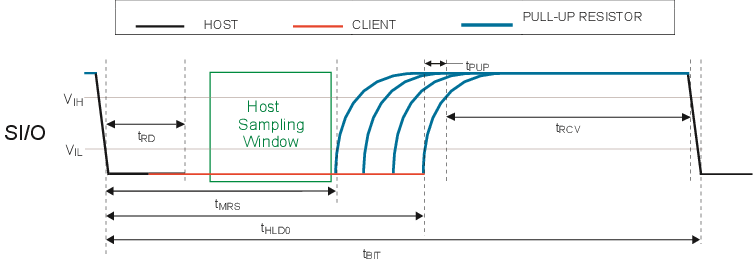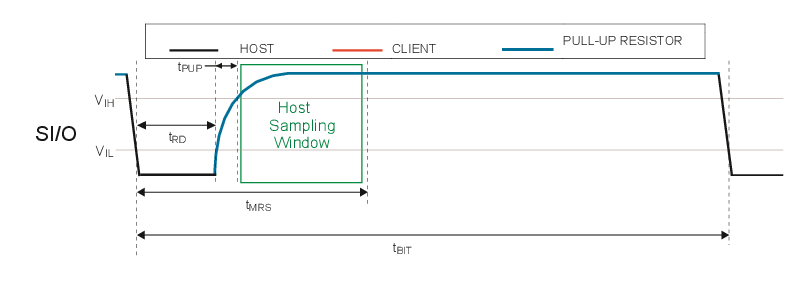4.3.2.5 Data Output Bit Frame
A data output bit frame is used when the host is to receive communication back from the ECC204-TFLXAUTH. Data output bit frames are used when reading any data out, as well as any ACK or NACK responses from the device. Just as in the input bit frame, the host initiates the sequence by driving the SI/O line below the VIL threshold, which engages the ECC204-TFLXAUTH internal timing generation circuit.
Within the output bit frame is the critical timing parameter tRD, which is defined as the amount of time the host must continue to drive the SI/O line low after crossing below the VIL threshold to request a data bit back from the ECC204-TFLXAUTH. Once the tRD duration expires, the host must release the SI/O line.
If the ECC204-TFLXAUTH is responding with a logic ‘0’ (for either a ‘0’ data bit or an ACK response), it will begin to pull the SI/O line low concurrently during the tRD window and continue to hold it low for a duration of tHLD0, after which it will release the line to be pulled back up to VPUP (see the following figure). Thus, when the host samples SI/O within the tMRS window, it will see a voltage less than VIL and decode this event as a logic ‘0’. By definition, the tHLD0 time is longer than the tMRS time, and, therefore, the host is ensured to sample while the ECC204-TFLXAUTH is still driving the SI/O line low.
0’ Data Output Bit Frame Waveform
If the ECC204-TFLXAUTH intends to respond with a logic ‘1’ (for either a ‘1’ data bit or a NACK response), it will not drive the SI/O line low at all. When the host releases the SI/O line after the maximum tRD elapses, the line will be pulled up to VPUP. Thus, when the host samples the SI/O line within the tMRS window, it will detect a voltage greater than VIH and decode this event as a logic ‘1’.
The data output bit frame is shown in detail below.

